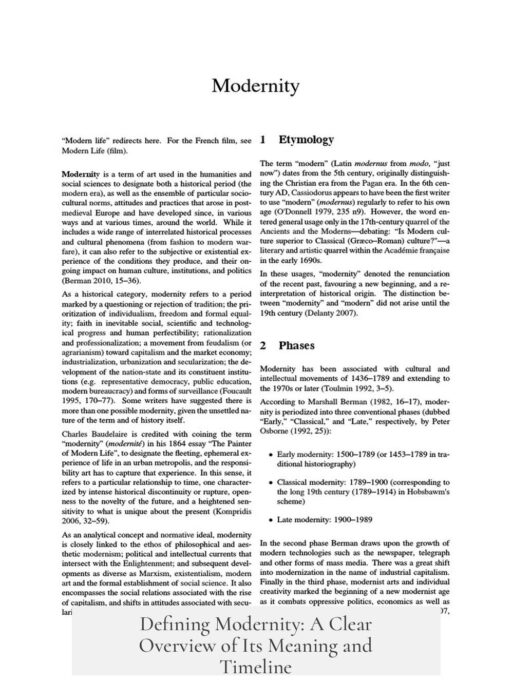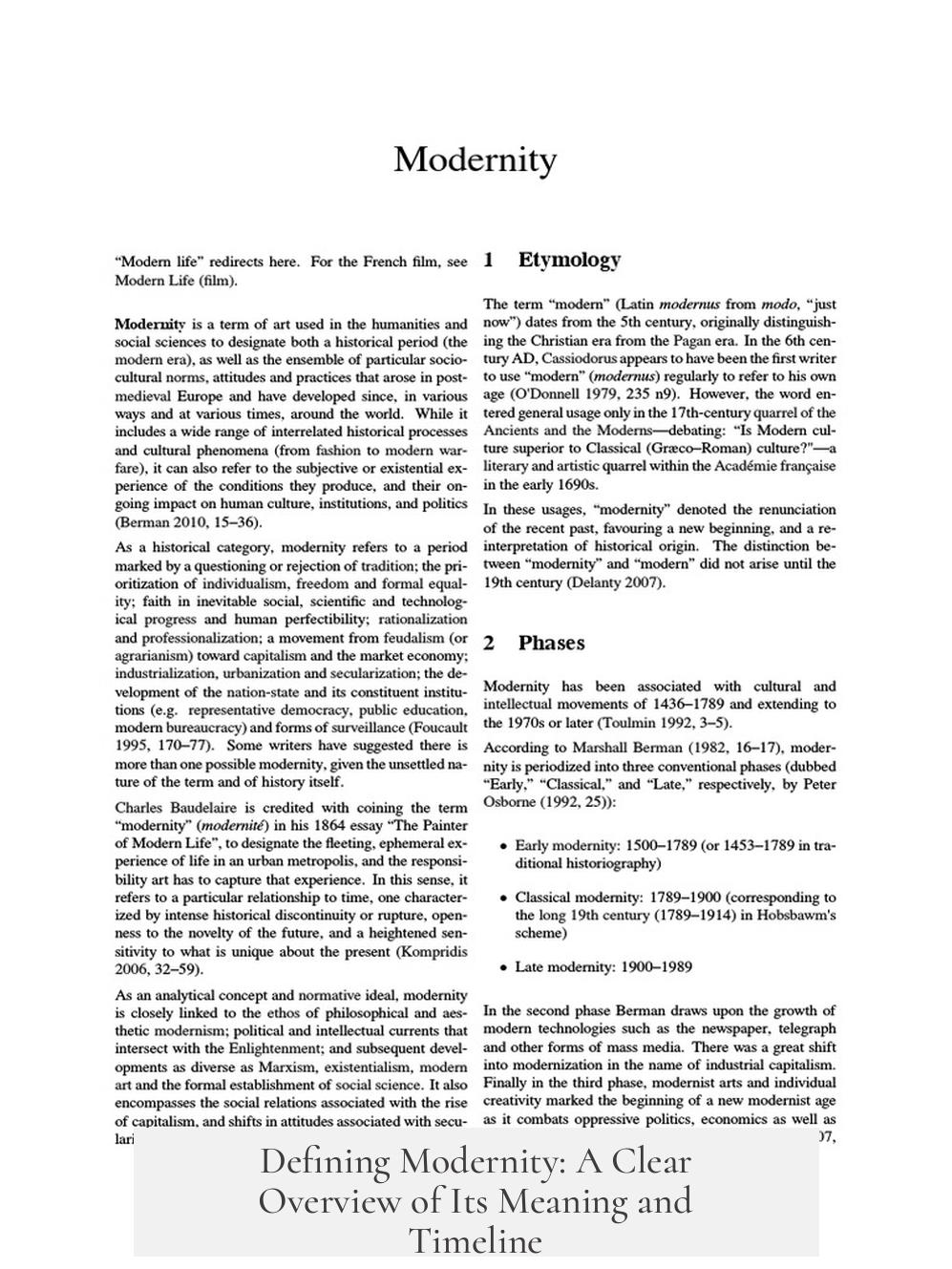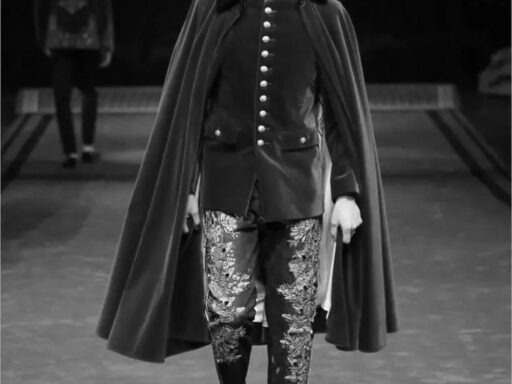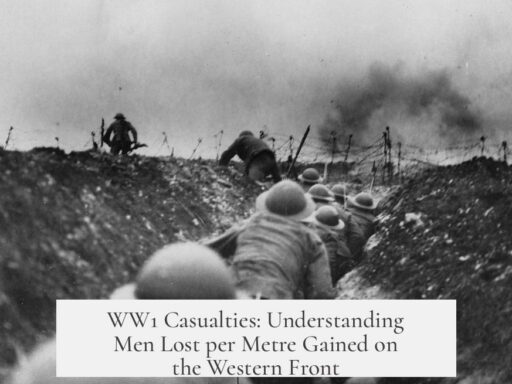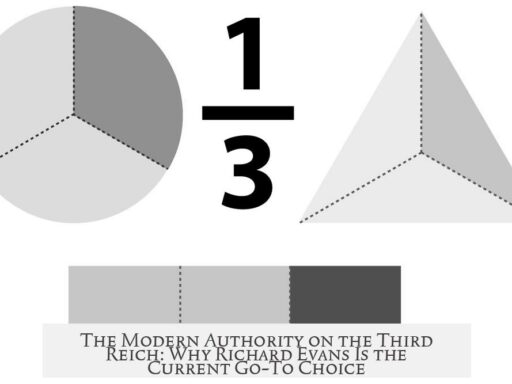Modernity is a complex concept referring both to a historical period and a set of cultural, intellectual, and social developments characterized by rationality, scientific progress, and political transformation. It is generally defined as emerging from the Renaissance in Europe, flourishing through the Enlightenment, and continuing into the 20th century, with its boundaries debated across disciplines and contexts.
Modernity originates in European history during the Renaissance (15th-17th centuries) and the Enlightenment of the 18th century. It marks the end of the Medieval period and introduces new ways of thinking characterized by reason, scientific inquiry, and secular governance. This transformation included the rise of individualism, urbanization, capitalism, and technological innovation, setting the foundation for contemporary Western societies.
Many scholars locate modernity starting roughly between 1450 and 1500 with early modernity around the Renaissance and Reformation and extending through the French Revolution (1789). The French Revolution is often seen as a critical turning point, accelerating modern political and social developments. Some periodize modernity into phases:
- Early Modernity: Approximately 1500–1789, including the Renaissance and Enlightenment.
- Classical Modernity: Roughly 1789–1900, encompassing revolutionary politics, industrialization, and nation-state formation.
- Late Modernity: Circa 1900–1989, involving intensified technological growth, global conflicts, and cultural shifts leading into contemporary society.
Beyond late modernity, concepts such as “postmodernity” and “liquid modernity” describe eras reacting to or evolving from core modern values. Postmodernity critiques the optimism of progress and challenges universal narratives inherent to modernity, while late or liquid modernity emphasizes rapid social change and uncertainty rather than a clear break from modernity.
Modernity is conceptually associated with the rational organization of society, mechanization, and scientific administration. “High modernity,” a term popularized by James Scott in Seeing Like a State, refers to deliberate, data-driven efforts to engineer society through centralized control and technocratic governance. This mold shapes state institutions and economic systems during the 19th and 20th centuries. The transparency and clarity in understanding phenomena—the hallmark of modernity—permeates art, politics, and knowledge.
Dating modernity depends largely on which elements one emphasizes:
- Philosophical-political developments: Some locate modernity’s origins in Machiavelli’s political realism or Montesquieu’s ideas on governmental power separation, which diverged from medieval thought.
- Technological and economic progress: Industrialization and mechanization act as key identifiers, with advances in transportation and communication reshaping global interaction.
- Psychological condition: A view from Marxist humanism emphasizes a dialectical consciousness linked to belief in utopian futures, dating roughly from the late 18th century onward.
Modernity also includes social and intellectual norms such as rational worldview, scientific method adoption, secularization, and faith in progress. The emergence of standardized language examples like Samuel Johnson’s dictionary (1755) illustrates an effort to unify cultural and linguistic practice—one key aspect distinguishing the modern era.
There remains significant debate about the precise end of modernity. Some mark 1930 with the Great Depression or World War II as pivotal, while others push the boundary into the late 20th century due to the rise of globalization and neoliberal economics reshaping social and political realities.
In summary, modernity is both a period and a set of layered processes defined by rationalism, scientific and technological advancement, political restructuring, and cultural shifts. It resists singular definition due to its varied manifestations globally and across disciplines. Its legacy continues to influence contemporary thought, governance, and culture.
| Aspect | Description | Typical Dating |
|---|---|---|
| Early Modernity | Renaissance, Reformation, Enlightenment effects on society, thought | 1500–1789 |
| Classical Modernity | Revolutions, industrialization, nation-state formation | 1789–1900 |
| Late Modernity | Technological acceleration, two World Wars, cultural shifts | 1900–1989 |
| Postmodernity | Critique of progress, rise of globalization, cultural fragmentation | Mid-20th century–present |
- Modernity originates from Renaissance and Enlightenment thought, marking a shift to rational, scientific perspectives.
- It is characterized by industrialization, individualism, secularization, and technological innovation.
- Periodization varies, but generally spans from the 15th to the late 20th century, divided into early, classical, and late phases.
- Modernity involves political realism, scientific methods, and growing global interconnectedness.
- The concept is debated internationally, as its manifestations differ by culture and discipline.
